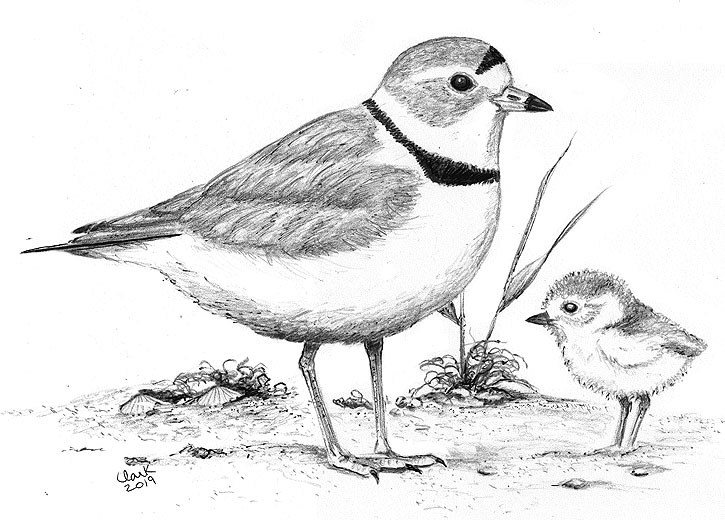
West Dennis Beach isn’t just for Snowy Owls:
Last week, my wife, for reasons that still aren’t clear, asked me if I had any photos of Piping Plovers. I didn’t have any and wasn’t even sure of the best (easiest) place to take photos of these little, but sometimes controversial, birds. I mentioned my problem to Susan, who is both a customer and a primo photographer. Susan always seems to know good locations to photograph birds, and this time was no exception. She suggested West Dennis Beach. Yes, that’s right, the same West Dennis Beach we visit in the winter to see Snowy Owls. Susan says it’s good for birds in the warm weather, too. Why didn’t I know that?
Before I begin singing the praises of WDB, you need to know that this time of year (after Memorial Day), the town charges a fee ($25.00-$30.00) to park. The price isn’t really too bad if you’re planning to spend the day swimming, picnicking and doing other beachy stuff, but it’s a little stiff just to check out a few birds. I figured I could beat the system if I arrived really early, and I was right…sort of. More on that later.
The first thing I did, after shutting off the alarm at 5:00AM, was to wake up my wife. If I had to get up early for her plover photos, she was getting up, too. When we arrived at WDB, the guard shack was closed, supporting my theory that the early birder gets free parking. As we drove along the rather lengthy parking lot, I was reminded of just how beautiful Cape Cod is this time of year. The dunes were covered with flowering salt spray roses, beach pea, golden heather and a plant with one of my favorite names, dusty miller. We parked at the far end (next to the barriers that shut off the last section of the parking lot) and walked onto the beach. Typically, birding involves long hikes and considerable effort in order to find a particular species. Not here. Fifty yards from our car were two women with cameras and twenty feet in front of the women was a very handsome Piping Plover. Sweet! I could snap a few pics, get back in my car and be back in bed before I had a chance to totally wake up. Then I heard my wife say, “Oh, my goodness!” Suddenly I knew I wouldn’t be going back to bed any time soon.
The plover I was focusing on was in peak breeding plumage, but my wife was watching a different one. Her plover was hunkered on the ground, with its feathers all disheveled. As she watched this “messy” bird, she soon found out the reason for its condition. From underneath one of the tousled wings a small face peeked out. Oh, my goodness! And it was only the beginning. Soon a second face appeared, then a third, and then a forth. Four baby Piping Plovers had been keeping warm under their mother. (FYI: We called this brooding adult “their mother,” when in fact we didn’t know for sure. Adult plovers look nearly identical, and since either parent will brood the chicks, we just made up their genders. Fortunately, the birds didn’t seem to mind. Baby ducks follow the adults around like magnets and young songbirds endlessly nag their parents for food, but little plovers do neither. When they aren’t being kept warm, the fluffy little birds, which look like dust bunnies with legs, scatter along the beach like kids at a theme park. One baby raced down to the water, while another headed for the beach grass and a third picked at bugs in the wrack line. The last baby seemed to have early-onset ADD and just ran around totally unfocused. Good luck, bird parents.
With all of my yapping about Piping Plovers, you might think they were the only avian stars on WDB. Actually, the real show belonged to the terns. Mixed in with the plovers were a number of Least Tern nests. In order to keep the birds safe and to make the public aware of their presence, the town has placed signs and warning “string” around the breeding area. And if the signs and string don’t get your attention, the terns most certainly will. While Piping Plovers tend to be relaxed and tolerant, Least Terns are more like killer bees, ready to mess up anyone or anything that gets too close to their nests. Any time I stopped to take a picture and just to observe them, the pugnacious birds came screaming right at me. For some reason, however, they never bothered my wife and I’m not sure why. Perhaps it’s because I’m taller, or I wear a goofy birding hat or because she was too busy talking to the baby plovers to pose any kind of threat. I think it’s the last one. West Dennis Beach is a very popular beach, in the middle of a congested area. Anyone who wants to see the plover/tern show should visit this beach, but also keep a safe distance and avoid stressing the birds. The warning string is meant to keep humans out, but not birds in. Baby birds and even nests could be anywhere. Walk slowly and carefully. The fact that shorebirds are able to effectively breed on this busy beach is a tribute to the tolerance of both the birds and the public. (See, we really can get along.)
Before leaving WDB, I stopped at the now opened guard shack and spoke with two college-age women, who were sitting in beach chairs, taking money and enjoying the sun. They told me that the parking lot attendants don’t arrive until 8:00AM. Folks who just want to see the birds (or go fishing, or collect shells) should arrive early and leave early, or they’ll have to pay for parking, just like the beachy people do. In other words, set your alarm for 5:00AM.